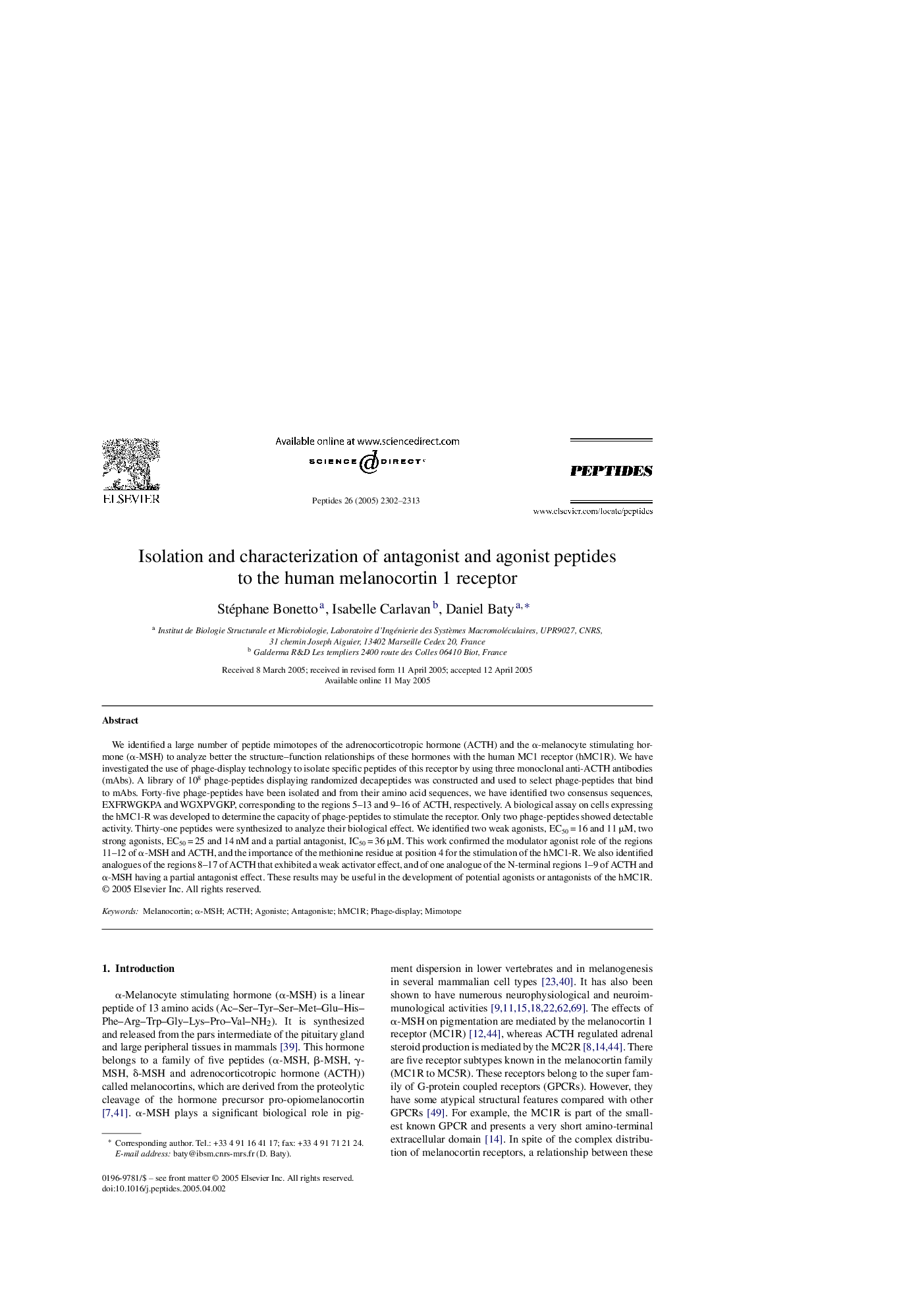| Article ID | Journal | Published Year | Pages | File Type |
|---|---|---|---|---|
| 2008795 | Peptides | 2005 | 12 Pages |
Abstract
We identified a large number of peptide mimotopes of the adrenocorticotropic hormone (ACTH) and the α-melanocyte stimulating hormone (α-MSH) to analyze better the structure-function relationships of these hormones with the human MC1 receptor (hMC1R). We have investigated the use of phage-display technology to isolate specific peptides of this receptor by using three monoclonal anti-ACTH antibodies (mAbs). A library of 108 phage-peptides displaying randomized decapeptides was constructed and used to select phage-peptides that bind to mAbs. Forty-five phage-peptides have been isolated and from their amino acid sequences, we have identified two consensus sequences, EXFRWGKPA and WGXPVGKP, corresponding to the regions 5-13 and 9-16 of ACTH, respectively. A biological assay on cells expressing the hMC1-R was developed to determine the capacity of phage-peptides to stimulate the receptor. Only two phage-peptides showed detectable activity. Thirty-one peptides were synthesized to analyze their biological effect. We identified two weak agonists, EC50 = 16 and 11 μM, two strong agonists, EC50 = 25 and 14 nM and a partial antagonist, IC50 = 36 μM. This work confirmed the modulator agonist role of the regions 11-12 of α-MSH and ACTH, and the importance of the methionine residue at position 4 for the stimulation of the hMC1-R. We also identified analogues of the regions 8-17 of ACTH that exhibited a weak activator effect, and of one analogue of the N-terminal regions 1-9 of ACTH and α-MSH having a partial antagonist effect. These results may be useful in the development of potential agonists or antagonists of the hMC1R.
Related Topics
Life Sciences
Biochemistry, Genetics and Molecular Biology
Biochemistry
Authors
Stéphane Bonetto, Isabelle Carlavan, Daniel Baty,
